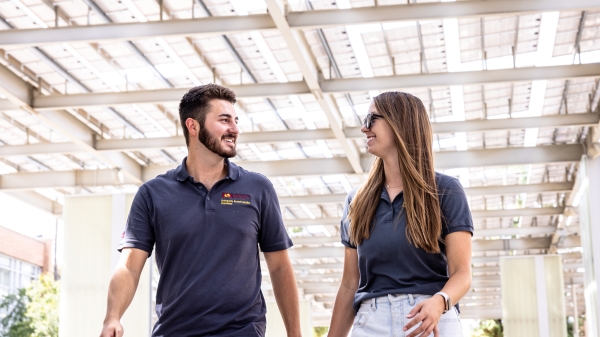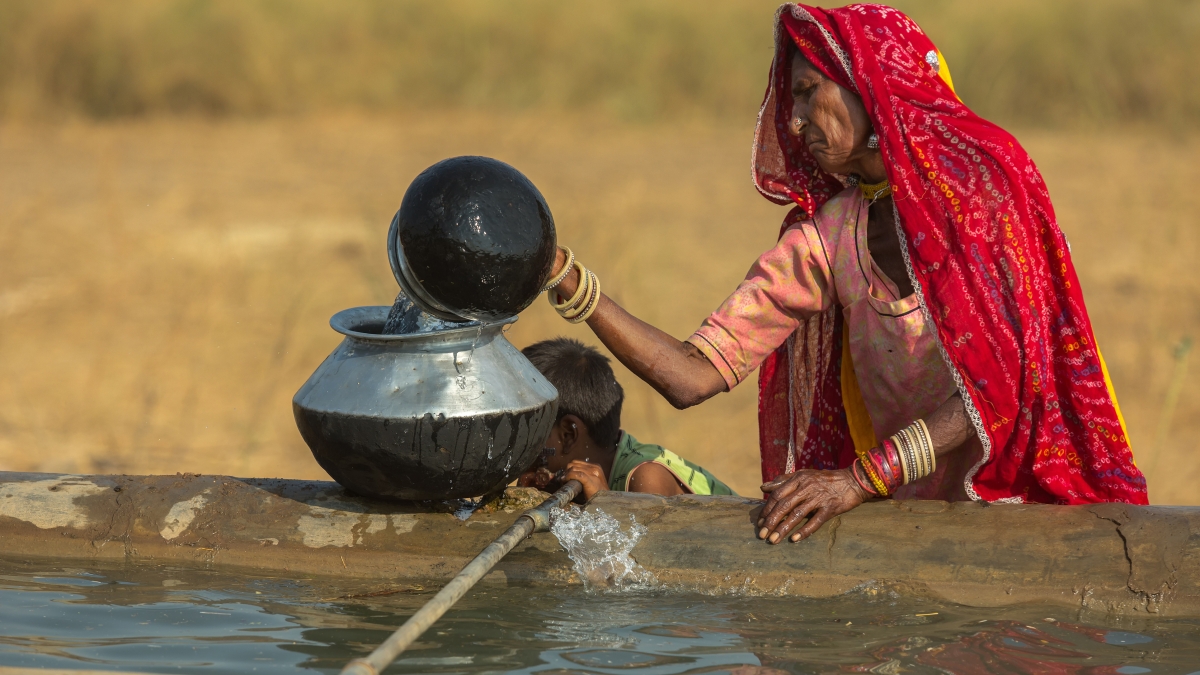Earlier this summer, the sixth-largest city in India, Chennai, ran out of water. The cause wasn’t just a weak monsoon. Overextraction of groundwater, unmaintained reservoirs, runaway urban growth and leaking pipelines all played a role.
Chennai’s four reservoirs are puddles of cracked mud. Some parts of the city have not had piped water for five months. An Indian government think tank predicts Day Zero for 21 Indian cities next year.
Water crises are now global. Cape Town, South Africa, narrowly escaped Day Zero last year, but it’s still at risk, as are Sao Paulo and Mexico City. Iraq, Morocco and Spain also face water shortages.
Two years ago, eight Arizona State University students spent a month living in a Mojave Desert ghost town in the dead of summer, living on 4 gallons of water per person per day and no air conditioning. A hybrid art-science experiment, it started off as a water exercise and turned into a lesson on collaboration no one expected.
The idea was co-directed by two ASU faculty members: Marco Janssen, director of the Center for Behavior, Institutions and the Environment and a professor in the School of Sustainability, and Adriene Jenik, a professor of intermedia in the Herberger Institute for Design and the Arts. They created a near-future fictional scenario and dubbed the experiment Drylab2023.
Recent news has transformed Drylab2023 into more of a training scenario than an experiment. ASU Now talked to Jenik about the crises, the eerily prescient experiment and the nexus between the two.
Editor's note: Answers have been edited for length and clarity.
Question: The sixth-largest city in India is out of water, and 21 other Indian cities are facing Day Zeros next year. What are your predictions on the outcomes: mass migration on a scale that makes the Syrian diaspora look like a casual commute? Life with a daily water supply similar to Drylab2023? Any predictions about impacts to industry and urban life?
Answer: What we are seeing in Chennai right now is a devastating illustration of human-driven climate disruption. A short and sparse monsoon season has not replenished water storage, reservoirs and aquifers that people depend on for water consumption and agriculture; the large and developing population has been drilling wells deeper and deeper, rapidly draining groundwater reserves. Their freshwater ecosystem of marshes, streams and estuaries has been covered with landfill and built upon, further impacting weather systems and the resilience of the natural systems. The more well-to-do (and their neighbors and friends) are able to continue on, for the moment, without many disruptions due to private wells, but the poor and aspirational find their lives organized around the sound of the water truck and reconfigured economically, socially and aesthetically in relation to the scarcity of this precious resource.
Sadly, these disruptions are not hard to predict. They are a regular part of the forecasting and planning of large businesses and national, regional and local governments, including our own country’s military forecasting. But the effects are not in a distant imagined future. Many don’t realize that the current humanitarian crisis on our southern national border is caused in part by climate migration, revealing the complex impacts of our historic overconsumption of natural resources.
It is hard for me to picture a near future where access to clean, fresh water continues in as plentiful a way as it is in most of our country at this moment. Between aging city water infrastructure threatening water quality, increased privatization of water sources, groundwater contamination as a result of fracking and other extractive technologies and the increase in climate extremes including drought and desertification of land that affects agriculture, the current thoughtless use of water in our culture will not be sustained for long.
One vision does turn in the direction of an apocalyptic scenario where water scarcity produces increased conflict and increases the desperation caused by the gap between the rich and poor — with the rich retaining access to this precious resource and the poor dying of thirst and disease. Pretty grim.
Another vision, which Drylab2023 shows is just as plausible, is that people will join together as a community to honor and steward this precious resource. Dr. Elinor Ostrom, ASU faculty and Nobel Prize winner, through her observations of cultures around the world, showed that the management of a commons is doable and not at all unusual. She and her research partners even outlined some design principles that made it more likely to occur and be sustained successfully over time. We can learn from our indigenous colleagues and their communities, who treat water as medicine and understand it as the sacred life force that it is, that there are other ways to live in relation to our water. We can be proactive in overhauling our building and industrial codes so that they incorporate greywater and composting systems, and we can rethink our diets by moving away from animal protein.
As you can see, the rethinking of water necessitates a rethinking of all of our living systems, so this will take immense political and social will. I am hopeful that these initial Day Zero events — like the one last year that forged significant changes in water use and management in Cape Town, South Africa — are not just seen as far-off problems befalling impoverished nations, but are understood as warning signs for us to not continue in a “business as usual” fashion.
Q: At the end of Drylab2023, participants hoarded sizeable amounts of “personal” water they’d saved up. No one squandered it on things like showers, but there wasn’t a lot of sharing either. Do you think this is predictive of how a similar situation will shake out socially in reality?
A: I was personally shocked and surprised at what ended up happening in Drylab in relation to this “hoarding” issue. When we first designed the project, each person was to be granted 2 gallons of water for personal use (so as to not dehydrate) and 2 gallons for the common pool to be negotiated with others. Upon arriving on site, with the co-directors no longer involved in decision-making but solely serving as chaperones and observers of the process, a subset of the group started to lobby for a 3:1 distribution — 3 gallons personal, 1 gallon common pool. The rest of the group went along, even as they recognized and commented upon the degree of distrust they had taken on from growing up in such an individualistic culture. This decision was especially poignant, as several of the students from nonwhite backgrounds understood that they had a different experience of community — that their needs had been met within community settings and as a result, they had a greater sense of trust.
Most disappointing was that even though the data showed that they had plenty of water to share after week three and they could easily change to a 2:2 distribution, many participants still argued against changing. I believe that if the experiment had gone on longer than 30 days that the data would have won the day, but what happened certainly underlined the critical importance of trust and community-building for the success of these changes long term. Trust takes time and is more difficult as we scale to a larger population, and so we can see that if we are in a crisis and rushing changes through, and if they are enacted across a large scale of population, they are less likely to be embraced.
Q: According to research, nearly half of the human population is living with water scarcity, inhabiting places unable to fully meet their drinking, cooking and sanitation needs. What are your thoughts on that?
A: As informed as we believe we are, many of us live in an illusory bubble of constant access — and growing in amount and speed — to natural resources and consumer goods. Even if we are aware of the impacts of water scarcity throughout the world, we don’t understand ourselves and our overconsumption as the cause or connected. One of the more profound lessons of Drylab2023 was a deeper understanding for each participant and the directors of the ways in which we are implicated personally and culturally in what is happening. Few cultures waste as much water as we doThe average daily water usage in Tempe is 80-100 gallons per day.. It is this waste and overconsumptive lifestyle that is now glorified and “the dream” of many other peoples and cultures — no wonder people continue to put themselves in danger to migrate! It is our responsibility to join with other privileged cultures around the world to address the possibility of another way of living — to honor and value and support, rather than degrade and deign to “improve," the water conservation and land stewardship that indigenous and poor cultures have developed over millennia. Can we be humble and learn these lessons even as we develop technological innovations?
Another lesson learned was that fostering community while bringing beauty and mindfulness to the process of daily living can actually elevate what at first seems like a life of hardship and depravation. Again, ancient cultures already know this!
Q: Do you plan to resurrect Drylab2023?
A: I would very much like to continue offering this as an immersive/experiential learning module and am putting effort in the next few years into developing an ongoing offering, either within ASU or with another external partner. On-campus ASU presentations have shown a significant interest among students for participating in future offerings. Ideally, our ASU community could face the existential challenge presented us, and take on further responsibility as a “sustainable campus” to encourage the radical rethinking of our use patterns. In some cases, as with Drylab2023, it could forge a new lifelong relationship to water; for all it would increase empathy and understanding of the real hardships and obstacles of people living without clean fresh water.
Top photo: A woman in Pushkar, India, draws water from the well to take to her tent in the desert. Photo courtesy of Getty Images/iStock Editorial
More Environment and sustainability

The future is green: Job demand translates to high employability for ASU sustainability grads
A 2023 report by Forbes on the state of green jobs confirmed what Arizona State University has been trumpeting for years: Sustainability will play a large part in the new economy.The report suggests…

Researcher works on changing people's mindsets to fight climate change
Meaningful action to heal the climate requires a complete shift in the way people think and perceive each other, according to an expert on social transformation who spoke at Arizona State University…

NOAA, ASU offer workshop to bridge ocean exploration, education
Oceans are vital to sustaining life on Earth, as they produce over half of the oxygen we breathe and play a crucial role in regulating the planet's climate. They also support a diverse array of…
